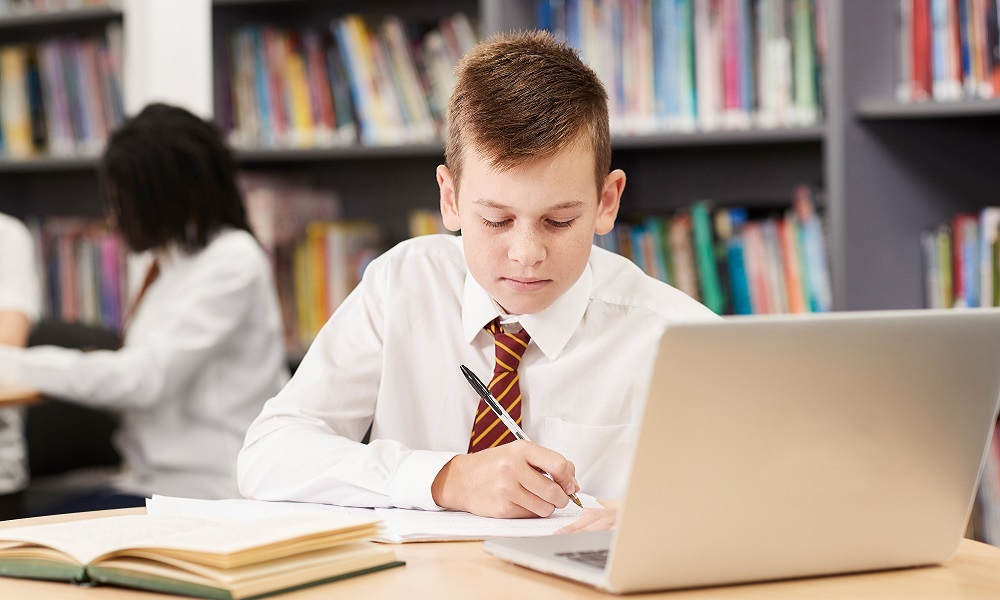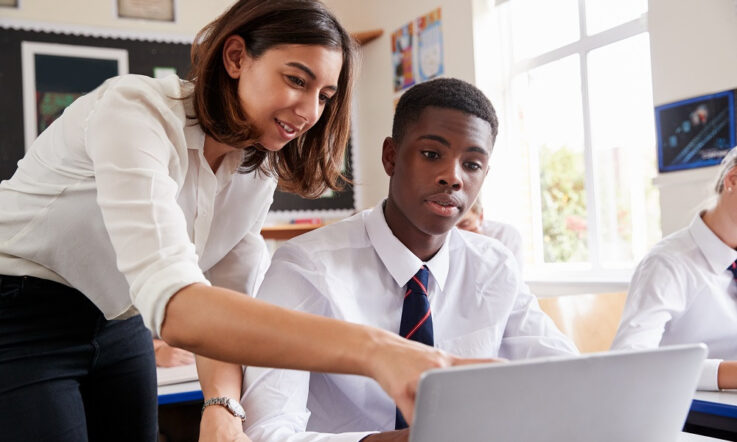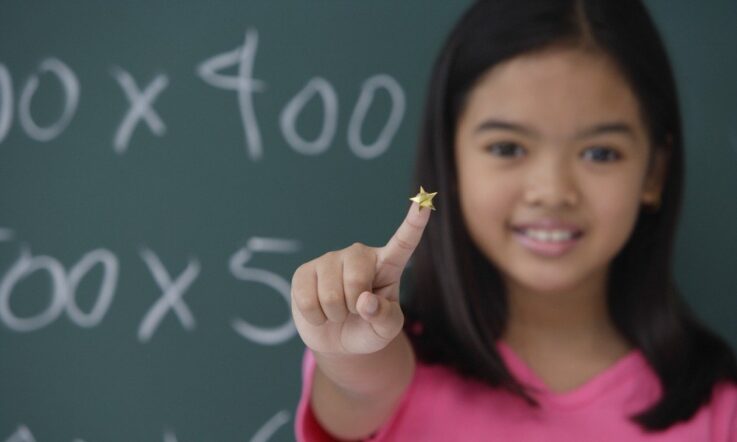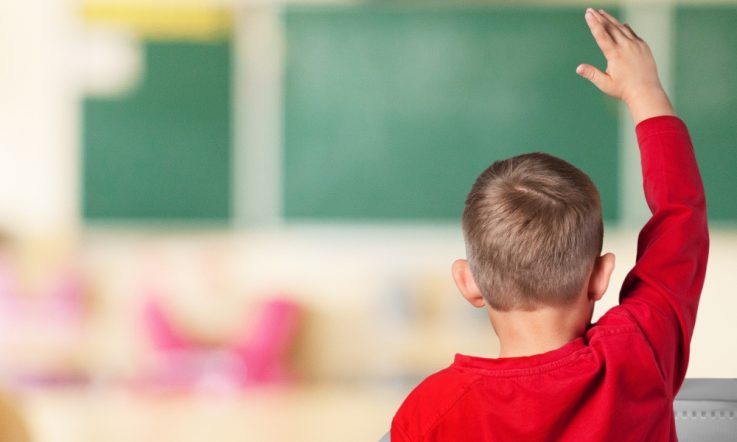Self-regulation is a critical factor for success in learning and life. With the emerging prevalence of online learning in higher education, students who have developed capabilities such as skills to set goals, apply strategies and monitor their progress are well prepared for future learning.
To succeed, students require functional learning practices and study habits that are developed within supportive learning environments. Through experience and practice, all students can respond intentionally to manage their thoughts, feelings and behaviour.
Capabilities for life and learning are facilitated by learning and practising life skills, such as self-awareness, that can be taught irrespective of personality traits or disposition for learning. Being an effective self-regulated learner starts with being self-aware about learning new skills and how to take these skills and apply them in different life contexts.
Identifying the fundamentals of self-regulated learning assists teachers in facilitating learning for life and enables students to recognise effective ways of developing and practising skills in preparation for life. To assist teachers and students, I designed the Capabilities for Life & Learning Model – a tool that informs teachers’ lesson design and enhances students’ self-awareness about learning.
The four approaches represented in the model
- Connect learning to real world skills, students’ prior learning, topics of interest and through the communication of learning goals.
- Facilitate learning by the establishment of expectations, delivery of instructions, suitability of challenging scaffolds and assurance from questions.
- Diversify learning through the adaptation of the learning processes and the products that demonstrate the learning, negotiations, provision of resource access and acknowledgement to celebrate achievements.
- Socialise learning in environments that support positive communication and shared responsibility within caring communities.
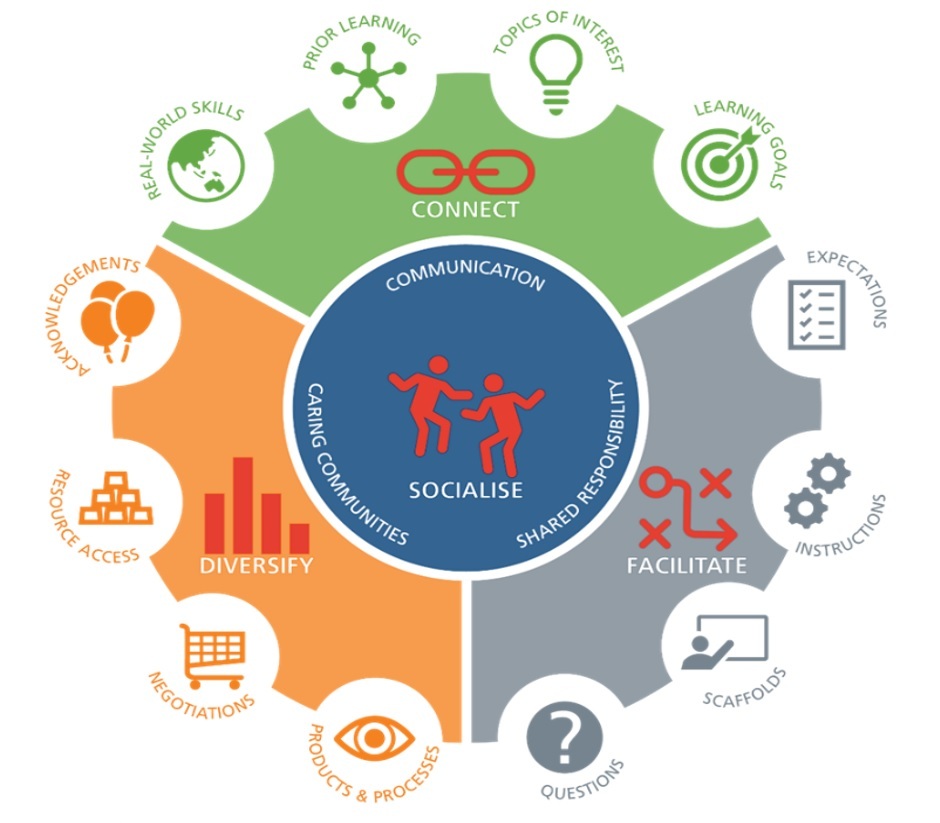
Caption: The Capabilities for Life & Learning Model.
What evidence supports the model?
The theoretical approaches of the Capabilities for Life & Learning Model are informed through an extensive review of the self-regulated learning literature (Muijs & Bokhove, 2020).
The literature show that teachers are powerful influencers who can support and empower students in the classroom to trigger an interest in their learning, develop a sense of agency and feel an expectation of success (White, 2017). Establishing a collaborative environment for safe learning supports students as they build connections and grow these capabilities.
The Australian Curriculum General Capability: Personal and Social Capabilities (ACARA, 2021) promotes that when students learn to understand themselves and others they manage their relationships, lives, work and learning more effectively. Personal and social capabilities are foundational for students to feel positive about themselves and the world around them.
The concept of self-regulated learning is based on four fundamentals that are premised on enabling students to play an active role in their own learning. Understanding the fundamentals for self-regulated learning makes it simpler to describe why it is necessary for learners to have a rationale for their learning, accept responsibility to take charge and feel that they have the capability to meet with success (Peel, 2019).
To facilitate the practical implementation of the fundamentals in lessons, effective core practices used by teachers working with young adolescent students in the primary-secondary school transition years have been identified from research conducted in school classrooms (Peel, 2020).
Using the model to empower teachers and students
The Capabilities for Learning & Life Model is a functional tool for teachers’ reflective practice that can be used in pre- and post-lesson design. For students, the model has been transformed into a decision-making tool that supports self-awareness. By reflecting on the questions developed from the model, students can know and manage themselves as independent and social learners.
The multifaceted purposes of the Decision-making Tools for Self-regulated Learning (SRL) are demonstrated in the following table:

Decision-making and self-regulated learning
In reality, teacher decision-making is influenced by the complex interplay between social and personal processes within the classroom context. A key aspect of implementing the decision-making tool is for teachers to recognise how they are already promoting opportunities for the students in their class to be empowered as learners.
As such, implementation of the tools is a process rather than a one-off event, as it can be used to confirm already embedded practices and to identify areas for future professional growth. At the University of Southern Queensland, pre-service teachers in their second year of a Bachelor of Education degree have implemented the tool to reflect and gain feedback on their teaching of lessons and as an observational tool to raise their awareness of effective everyday practices.
For Teachers: A Decision-Making Tool for SRL
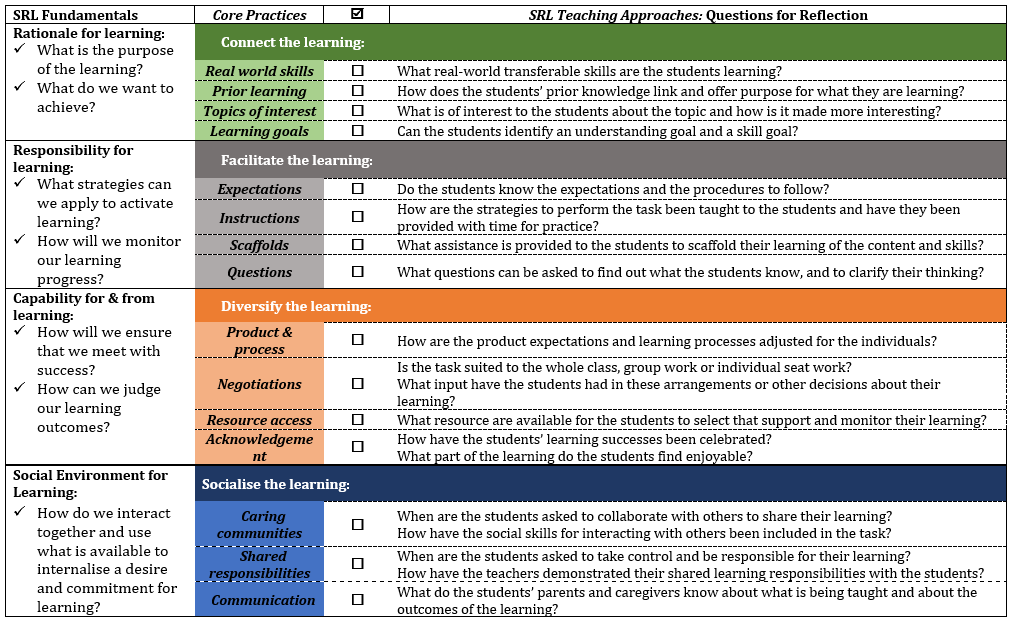
For Students: A Decision-Making Tool for SRL
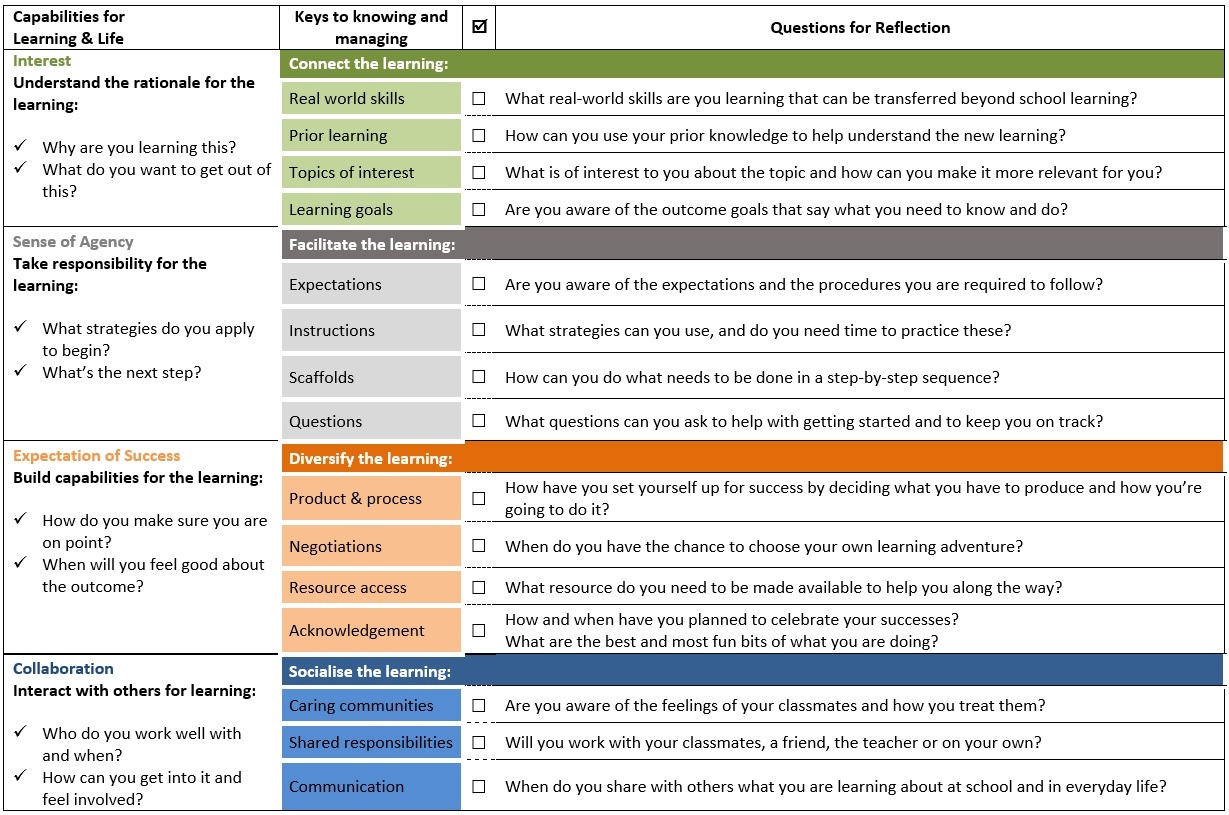
Students who are aware of their strengths and weaknesses and know how to motivate themselves to engage strategically in learning are more likely to take active control. It is accepted that self-regulated learning capabilities develop through maturation. However, there is considerable variation between students that can be associated with provision of opportunities and to how one reacts to feedback and perceived failures. The decision-making tool for students enables them to recognise the capabilities that they are developing and what is key to knowing and learning so they can recognise the supports and remove barriers to learning.
For example, when students are introduced to a unit of work, they are provided generally with the learning intentions and the assessment task. They then proceed to engage in a sequence of learning tasks that assist them develop the knowledge and skills to demonstrate competency. The missing link is the provision of a tool that they can use to guide their learning and articulate where they require adjustments and additional support. In other words, the implementation of the tool incorporated into the teaching process supports students to become-self-aware of themself as a learner in the classroom environment and enables the development of personal and social capabilities.
My colleague and I used this tool in our classroom behaviour management courses at the University of Southern Queensland with preservice teachers in the Bachelor of Education primary and Bachelor of Education secondary courses. The students have been positive in their feedback about the model and its application as a reflection tool.
Part of their assessment for the course is to use the model to reflect on a lesson they have taught and identify how they have provided opportunities in their planning and teaching for students to self-regulated their learning. It is intended that this awareness will inform their future lesson design, instruction and management, and the model and checklist tool is taken with them to their professional experience in schools to be applied to structure lesson observations.
In conclusion
Education is the preparation for life, now and into the future. To be equipped for meaningful participation in society, students need to be self-aware about themselves as learners. This is not developed by accident.
Capabilities for learning and life flourish in structured classroom environments that are strategically designed for students to take ownership and recognise the purpose of their learning.
References
Australian Curriculum, Assessment and Reporting Authority (ACARA, 2021). General capability: Personal and social capabilities. Retrieved from: https://www.australiancurricul...
Muijs, D., & Bokhove, C. (2020). Metacognition and self- regulation: Evidence review. London: Education Endowment Foundation. Retrieved from https://educationendowmentfoun...
Peel, K. L. (2019). The fundamentals for self-regulated learning: A framework to guide analysis and reflection. Educational Practice and Theory, 41(1), 23-49. https://doi.org/10.7459/ept/41.1.03
Peel, K. L. (2020). Everyday teaching practices for self-regulated learning. Issues in Educational Research 30(1), 260-282. Retrieved from http://www.iier.org.au/iier30/...
White, M. C. (2017). Cognitive modeling and self-regulation of learning in instructional settings. Teachers College Record, 119(13), 1-26.
In what ways do you encourage students in your classroom to take responsibility for their behaviour and learning? Is there a particular approach that you’ve found to be successful for your learners?
Think about your own classroom practice. Do students understand the goals and purpose for their learning? Do you set aside time for student reflection?
